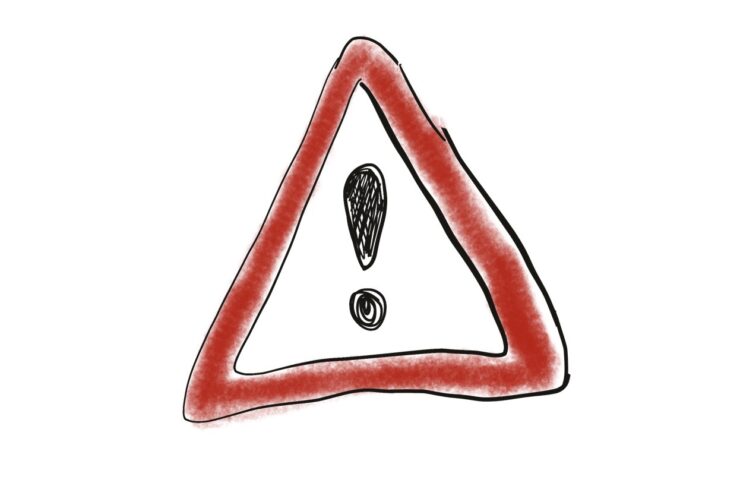Trigger warnings

During a statistics lecture, an example was given to explain how to perform a certain statistical test. In this example, the means between anorexic patients who received different treatments were compared. One of the students in this class was recovering from anorexia at the time and was very much triggered by the low numbers that were discussed in this example which led her to having difficulties eating the rest of the day.
In my lecture on how criminal law applies to cases of sexual violence, I provide a trigger warning to students in both the syllabus and before the class. This ensures that the topic does not take any of the students by surprise and they are able to prepare themselves mentally to participate or decide not to join the class. Given the high percentage of students at UU who have been victim of some form of sexual harassment, I find the trigger warning to be appropriate.
Some content used within a course can trigger distressing memories or thoughts for students and teachers alike. These may be, for example, students who have experienced trauma from a war, an accident, or abuse. To minimise causing further harm, it is recommended to use trigger warnings in your course. Trigger warnings are an ‘explicit notification’ that the material used in a specific learning environment is potentially disturbing, upsetting, or offensive LaBossiere, M. (2014). Trigger Warnings and Academic Freedom I. Talking Philosophy. Lockhart, E. A. (2016). Why trigger warnings are beneficial, perhaps even necessary. First Amendment Studies, 50(2), 59-69.
By using trigger warnings, a teacher can notify students who experienced related trauma and enable them to decide whether they want to be confronted with it in an academic context or not. Trigger warnings can help these students prepare mentally for possibly triggering content or to decide to not read or watch the specific learning material that they may find too mentally damaging Eisner, S. 2013. Bi: Notes for a Bisexual Revolution. Berkeley, CA: Seal Press. . This may benefit their wellbeing and thereby academic performance. For example, a student who is forewarned that the class will relate to something traumatic that they experienced may be able to prepare themselves and still participate in the discussion. Whereas without warning, they may be shocked by the topic and unable to participate meaningfully.
Opponents of trigger warnings suggest that they are a way of censoring learning material and that it is impossible to know which students would find which parts of course material disturbing. The use of trigger warnings in class is up to the discretion of the lecturer, however it is recommended that lecturers consider carefully whether to use them or not.
Tools
In deciding whether to use trigger warnings in your course, the following steps will be helpful.
Bentley, M. (2017). Trigger warnings and the student experience. Politics, 37(4), 470-485.
Eisner, S. 2013. Bi: Notes for a Bisexual Revolution. Berkeley, CA: Seal Press.
LaBossiere, M. (2014). Trigger Warnings and Academic Freedom I. Talking Philosophy. Lockhart, E. A. (2016). Why trigger warnings are beneficial, perhaps even necessary. First Amendment Studies, 50(2), 59-69.
Step 1: what do I have?
Examine the content of the materials for topics that could be triggering for students. Topics that may trigger trauma or extremely negative emotional reactions are:
- homophobia or transphobia
- dissection/blood
- rape and other forms of sexual violence
- violence
- abuse and death
- racism
- self-harm
- suicide/suicidal thoughts
- eating disorders/fat shaming
Step 2: evaluate, replace, or place trigger warnings
Evaluate whether the examples/cases/articles/visuals including any of these possible triggers are essential for the course.
- If not, consider removing/replacing them with another example/case/article or let students choose between multiple sources including the one with the trigger warning
- If it is: you can make a trigger warning; use a formulation such as: “This lecture/video/article includes reference to/consideration of themes of x, y, z/ or images of x, y, z, which might trigger unwelcome and distressing memories or thoughts for some students.”
Step 3: communication in advance
Communicate the trigger warning with students in advance:
- You can give a trigger warning before you show a possibly triggering video so student can mentally prepare themselves for such content
- You can give a trigger warning in the class before the class containing the disturbing topic saying ‘Next class may contain topics that may contain disturbing content etc.’
- You can give a trigger warning in the course manual/blackboard if articles or a lecture contain possible triggers
- You can give trigger warnings in course descriptions so students can take possible triggers into account when choosing courses (if it is an optional course)
Step 4: Communication with students who decide to not take in learning material based on trigger warning
Should students choose to not read an article, follow a lecture or look at any other learning materials due to possible triggers, the most important thing to do is to talk with them in person. You may suggest them to collect notes from fellow students so that they can catch-up with what they have missed. Another option is to discuss what materials they can watch/read or whether another assignment can be given as replacement.
Example
In a course on sexual politics, the topic of violence against women was addressed. Literature was assigned that analysed such violence from a feminist perspective, including describing some examples. One video was recommended (but not required) in the course, and the lecturer warned students about its content and advised them only to watch it at home and with other (female) students.
Additional Resources
Lockhart, E. A. (2016). Why trigger warnings are beneficial, perhaps even necessary. First Amendment Studies, 50(2), 59-69.
https://newrepublic.com/article/121820/my-students-need-trigger-warnings-and-professors-do-too
